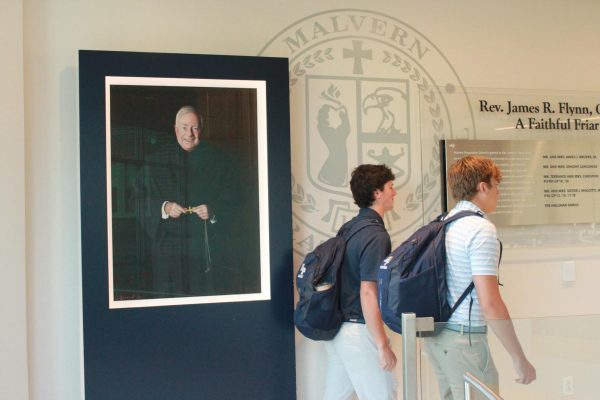Students & Teachers Adjust to Discrepancies in New Term Structure
How students and teachers are responding to Malvern’s new term schedule and how the pairing of classes is proving to create a variety of difficulty for students per term.
Through the many changes that have been made as a result of COVID-19, one that has greatly impacted the Malvern community has been the change from a normal rotating 8-block schedule, to the new four classes per term model. Instead of a two semester format, the four terms create new changes and opportunities for students and teachers, how well they can adapt, and more specifically, how their four classes determine the difficulty of their term.
“I like the new structure of the terms and I think it is more effective with the addition of virtual learning as opposed to a normal schedule,” Junior Chris Datz said when asked about his feelings on the new term format.
Similarly, Senior Cooper Frankenheimer had related thoughts when asked the same question.
“I like it because it is more interesting to focus on four classes compared to eight, but in the long run I feel it will be less effective than a normal year,” Frankenheimer said.
Although there is positivity surrounding this new structure, with it comes an added uncertainty. Only four classes are taken during one term, and depending on your original schedule, the classes that a student might have could be their hardest or their easiest paired together.
“On a one to ten scale, there is an absolute ten difference in my Term 1 and Term 2 classes,” said Datz, “I had two opens, Honors Spanish III, and AP Environmental first term and now AP Calculus, AP Economics, Roper [Honors British Literature], and Moral Theology for my second term.” This obviously shows the discrepancy between not only going from two to four classes, but the increased rigor also.
Frankenheimer, along with other students and teachers, are going through the same thing, but in reverse.
“My first term classes were AP Literature, Honors Chinese IV, Honors East Asian History and Theology paired with my second term classes, which are Honors Pre Calc, Honors Modern Medicine and two opens,” said Frankenheimer, “Although my Term 1 is obviously harder, I feel like I can handle it and actually the timing for my easier parts of the year come with the holidays and the end of the year, which is great for me.”
Overall, some students will have a large discrepancy and others won’t, but regardless everyone will have to adapt. The biggest challenge seen by both students was the break in between terms and how that would affect learning compared to a continuous cycle through the year.
“I think that is where this new schedule might prove to be less effective with the challenge of being able to go back to your Term 1 classes when Term 3 rolls around and having to pick up where you left off,” said Frankenheimer.
Not only students have this worry, as teachers have spoken about their concerns with the break in between terms.
“With this new intensive schedule comes a great opportunity to get more material covered, especially with language, but the challenge is in between terms when they aren’t practicing everyday,” said Spanish teacher Ms. Teresa Lohse.
Although Lohse’s schedule did not change dramatically, she has concerns about how effective this structure will be in terms of material being taught and more importantly, retained.
“Once we get through the entire year I will be able to determine the overall effectiveness of this structure and compare it to what is typically covered, allowing a good period of time to reflect,” said Lohse.
“With change, it is always interesting to see what’s possible” said Lohse.





